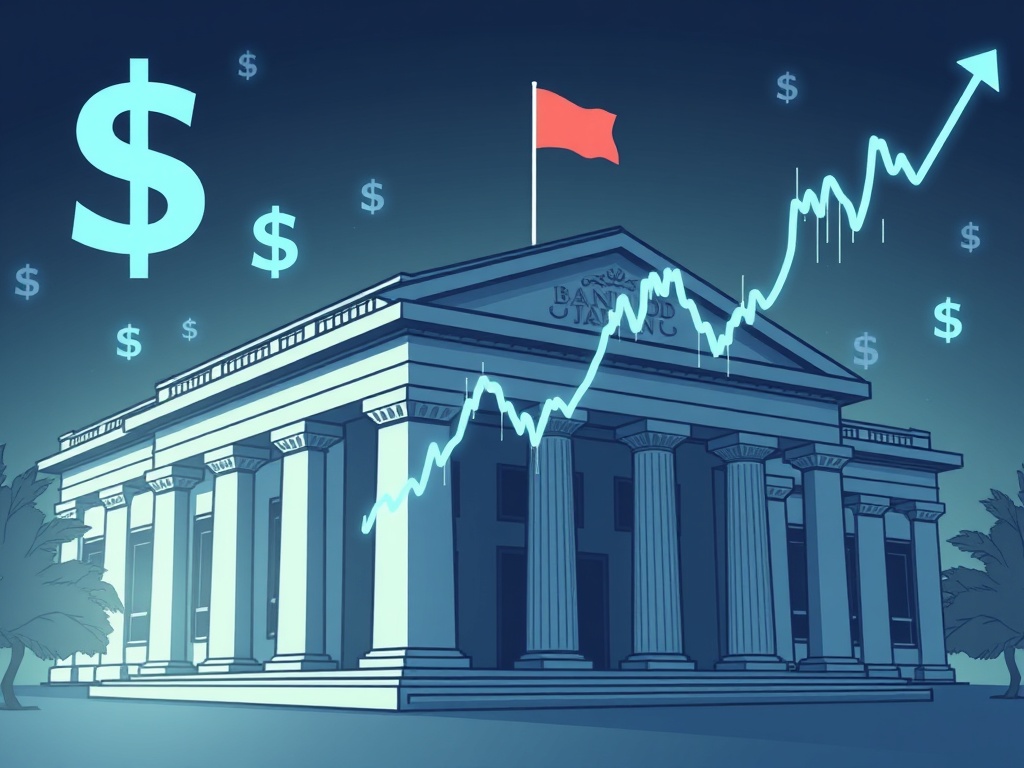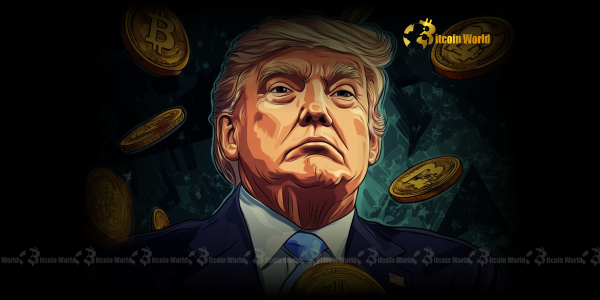BitcoinWorld

Bank of Japan’s Crucial Decision: Unlocking the Future of USD/JPY
In the dynamic world of global finance, central bank decisions often act as powerful tremors, sending ripples across various asset classes, from traditional equities and bonds to the burgeoning cryptocurrency markets. Understanding these macro shifts is paramount for any astute investor or trader. One of the most keenly watched events is the Bank of Japan meeting, a pivotal moment that holds immense sway over the global Forex market, particularly the highly traded USD/JPY currency pair. As market participants brace for the outcomes, insights from leading financial institutions like UBS become invaluable. What exactly are they anticipating, and how might it reshape the landscape for the Japanese Yen?
Decoding the Bank of Japan’s Unique Stance: What’s at Stake?
The Bank of Japan (BOJ) has long stood apart from its global counterparts, maintaining an ultra-loose Monetary Policy for decades in its relentless battle against deflation. While central banks worldwide embarked on aggressive rate-hiking cycles to combat soaring inflation, the BOJ cautiously navigated its path, only recently beginning to unwind its unconventional measures. This slow and deliberate approach makes each BOJ meeting a high-stakes event, scrutinized for any hints of a definitive shift towards normalization.
- Yield Curve Control (YCC): For years, the BOJ capped long-term government bond yields, effectively keeping borrowing costs low. Any adjustment to this policy is a major signal.
- Negative Interest Rates: The BOJ was one of the few central banks to maintain negative policy rates, encouraging lending and investment. The recent end to this policy marked a historic turning point.
- Inflation Target: The BOJ aims for a stable 2% inflation rate, a target it struggled to meet for years. Sustained inflation, particularly wage growth, is key to its policy direction.
The core challenge for the Bank of Japan is to normalize policy without triggering market instability or stifling nascent economic recovery. Their decisions directly influence the cost of capital, corporate earnings, and ultimately, the attractiveness of Japanese assets.
The USD/JPY Dance: How BOJ Policy Shapes the Pair
The USD/JPY currency pair is a fascinating interplay of two of the world’s largest economies and their divergent monetary policies. Historically, the significant interest rate differential between the United States (where the Federal Reserve has aggressively hiked rates) and Japan (where rates remained low) has been a primary driver of the pair. A wider differential typically strengthens the currency with higher rates (USD), while a narrowing differential can boost the other (JPY).
UBS’s analysis often highlights this differential as a critical factor. They note that even minor shifts in the Bank of Japan‘s rhetoric or actions can trigger substantial movements in USD/JPY. For instance, if the BOJ signals a more hawkish stance – implying future rate hikes or a faster pace of normalization – the Yen could strengthen significantly against the Dollar, leading to a decline in the USD/JPY pair. Conversely, if the BOJ maintains a cautious, dovish tone, or if the Federal Reserve indicates a prolonged period of high interest rates, the Dollar could regain strength against the Yen.
Consider these dynamics:
- Interest Rate Divergence: The greater the gap between US and Japanese interest rates, the more attractive it is for investors to hold USD-denominated assets, thus weakening the Yen.
- Carry Trade Unwind: The Yen has long been a popular funding currency for carry trades due to its low interest rates. A hawkish BOJ could trigger an unwind of these trades, leading to sharp Yen appreciation.
- Global Risk Sentiment: The Yen is often considered a safe-haven currency. During periods of global economic uncertainty or market turmoil, demand for the Yen can increase, potentially strengthening it against the Dollar.
UBS carefully assesses these variables, projecting how the delicate balance between US and Japanese economic outlooks and Monetary Policy decisions will play out in the USD/JPY exchange rate.
UBS’s Strategic Insights on Monetary Policy Evolution
UBS, as a leading global financial services firm, provides in-depth research and forecasts that are closely watched by institutional and retail investors alike. Their perspective on the Bank of Japan‘s Monetary Policy is often nuanced, considering not just explicit rate decisions but also forward guidance and subtle shifts in language. According to recent UBS reports, the bank is keenly focused on the BOJ’s assessment of inflation sustainability and wage growth as key determinants for future policy adjustments.
UBS suggests that while the BOJ has ended negative interest rates, the path to further normalization will likely be gradual. They anticipate that the central bank will move cautiously, observing the impact of its initial steps on the economy. Key aspects of UBS’s outlook on Monetary Policy include:
| Policy Aspect | UBS’s Expectation | Potential Impact |
|---|---|---|
| Next Rate Hike | Gradual, possibly later in the year or early next, dependent on data. | Modest Yen strengthening, potential for further USD/JPY decline. |
| Yield Curve Control (YCC) | Likely maintained with flexibility, or further tweaks to the cap. | Limits significant long-term bond yield increases, influencing JGBs. |
| Inflation Outlook | Focus on sustainable 2% inflation, especially wage-driven. | Crucial for future policy normalization, impacting long-term Yen outlook. |
UBS emphasizes that the BOJ’s communication will be as important as its actions. Any hawkish surprises could lead to sharp market reactions, particularly for the USD/JPY pair. Conversely, a more cautious tone than expected might see the Yen weaken, as investors re-evaluate the pace of normalization.
Navigating the Yen Outlook: Opportunities and Risks Ahead
The Yen outlook is a complex puzzle, influenced by both domestic Japanese factors and broader global economic trends. UBS’s perspective often delves into the various scenarios that could unfold, each presenting distinct opportunities and risks for traders and investors. A key theme is the potential for the Yen to regain strength if the Bank of Japan continues its path towards normalization, especially if global interest rates, particularly in the US, begin to fall or stabilize.
However, the path is not without its challenges. One significant risk to a stronger Yen outlook is a potential slowdown in the global economy, which could dampen risk appetite and lead to a flight to safety, paradoxically weakening the Yen if investors prefer the liquidity of the US Dollar in a crisis. Another risk is if Japanese inflation proves to be transient, forcing the BOJ to pause or even reverse its normalization efforts.
UBS often provides potential ranges for the USD/JPY pair based on different BOJ scenarios:
- Hawkish Scenario: If the BOJ surprises with faster rate hikes or a more aggressive YCC exit, UBS might project a stronger Yen, pushing USD/JPY towards lower levels, potentially testing support zones. This creates opportunities for those betting on Yen appreciation.
- Dovish Scenario: If the BOJ remains ultra-cautious or if global factors (like a strong US economy) keep the rate differential wide, UBS might see USD/JPY consolidating at higher levels or even resuming an uptrend. This scenario favors those holding USD.
- Neutral Scenario: A gradual, data-dependent approach from the BOJ could lead to range-bound trading in USD/JPY, with movements dictated more by US economic data and Federal Reserve expectations.
Understanding these scenarios is crucial for anyone looking to capitalize on or hedge against movements in the Forex market. The Yen outlook is not static; it’s a dynamic response to evolving economic realities and central bank strategies.
The Broader Forex Market Implications: Beyond USD/JPY
While the focus often remains on USD/JPY, the Bank of Japan‘s decisions reverberate across the entire Forex market. The Yen’s role as a major funding currency means that changes in its interest rates can significantly impact global carry trades, where investors borrow in a low-interest-rate currency to invest in higher-yielding assets elsewhere. An appreciation of the Yen can trigger a widespread unwinding of these trades, leading to volatility in other currency pairs and asset classes.
UBS frequently analyzes these broader implications, noting that a significant shift in the Bank of Japan‘s Monetary Policy could:
- Impact Global Liquidity: As the BOJ tightens, it removes liquidity from the global financial system, potentially affecting everything from bond markets to commodity prices and even risk assets like cryptocurrencies, which are sensitive to global liquidity conditions.
- Influence Other Major Pairs: A stronger Yen might indirectly strengthen other safe-haven currencies or impact cross-currency pairs like EUR/JPY or AUD/JPY, as capital flows adjust.
- Reshape Investor Portfolios: Global investors constantly rebalance their portfolios based on interest rate differentials and growth prospects. A changing Yen outlook could prompt significant reallocation of capital.
The interconnectedness of the Forex market means that no central bank operates in a vacuum. The BOJ’s actions are closely watched by other central banks, major financial institutions, and international investors, all of whom adjust their strategies in response. UBS’s comprehensive analysis provides a lens through which to understand these complex ripple effects, offering valuable insights for navigating the evolving global financial landscape.
Actionable Insights and a Compelling Conclusion
For investors and traders, the key takeaway from UBS’s analysis of the Bank of Japan meeting and its impact on USD/JPY is the importance of vigilance and adaptability. The era of ultra-loose Monetary Policy in Japan is drawing to a close, but the transition is likely to be gradual and data-dependent. This creates both opportunities for those anticipating a stronger Yen outlook and risks for those who might be caught off guard by unexpected policy shifts.
Here are some actionable insights:
- Monitor Key Data: Pay close attention to Japanese inflation figures, wage growth, and consumption data, as these are critical for the BOJ’s future policy decisions.
- Watch US Fed Policy: The Federal Reserve’s stance on interest rates will continue to be a major determinant for the USD/JPY pair, even as the BOJ normalizes. The rate differential remains crucial.
- Consider Diversification: Given the potential for volatility, consider diversifying your portfolio across different currency pairs and asset classes to mitigate risk.
- Stay Informed: Regularly review reports from institutions like UBS and other leading analysts to stay abreast of evolving market sentiment and forecasts.
In conclusion, the Bank of Japan‘s journey towards normalizing its Monetary Policy is a defining narrative in the current global financial climate. Its implications for the USD/JPY pair are profound, influencing not just currency traders but also global investors assessing the broader Forex market. UBS’s insights underscore the need for a strategic, informed approach, emphasizing that while the Yen’s long-term trajectory may be upward, the path will be marked by cautious steps and market reactions to every signal from Tokyo. Understanding these dynamics is not just about trading currencies; it’s about grasping the fundamental shifts shaping the global economy.
To learn more about the latest Forex market trends, explore our article on key developments shaping the Yen, US Dollar, and global interest rates affecting liquidity and institutional adoption.
This post Bank of Japan’s Crucial Decision: Unlocking the Future of USD/JPY first appeared on BitcoinWorld and is written by Editorial Team





